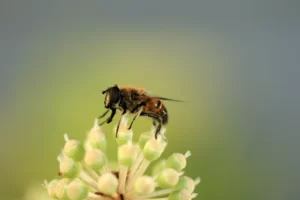The MGO you will see on the front of Manuka Honey jars is an abbreviation for methylglyoxal.
MGO (Methylglyoxal) is a naturally occurring chemical marker that is present in Manuka honey. It is the scientific value for the property that is responsible for the anti-bacterial nature of the honey.
It is a naturally occurring element and it is specific to the Tea Tree / Manuka Bush (Leptospermum scoparium).
The Manuka tree, whose genus name is Leptospermum scoparium produces this rare property in higher levels than in any other honey.
The MGO levels in Manuka honey can vary dramatically from 0 to 1000+ MGO.
The higher the number, the higher the antibacterial properties.
Also, the more bitter the honey becomes as it increases in it’s natural medicinal flavour.
Its presence and levels can be tested in a scientific laboratory and so if you are looking to buy manuka honey from a reputable company then they will be able to provide the testing certificate for the honey that you have purchase.
What is the difference between MGO and UMF?
MGO is a part of the UMF grading system but MGO is not a grading system on its own.
UMF includes a few different chemical markers in the honey including HMF, MGO and DHA. Therefore is it considered a grading system.
MGO numbers on your Manuka honey mean the measured methylglyoxal (MGO) levels in the honey.
Check out our UMF and MGO comparison chart
Some people also refer to methyglyoxal as MG.
So, that is what the MGO on Manuka Honey means.
Any questions? Ask away in the comments below.



